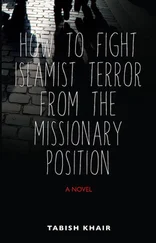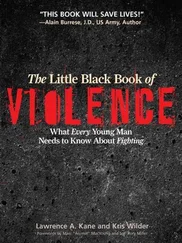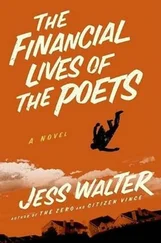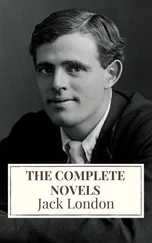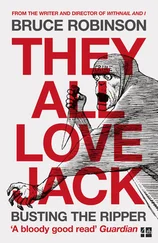The girl screamed, huddled in her corner and covered her naked, frail body with her arms.
No blows came. No hands forced her to the ground. She peered between her shaking arms, eyes wide, wet. A man knelt in front of her, clad head-to-toe in black body armor. He had an assault rifle in his hands, the barrel pointed down. His face was painted, and he had goggles of some kind on his face. He pushed the goggles up, revealing his eyes. Light spilled from the open door, and the girl could see that his eyes were brown, and kind.
He said something, waved at her, pointed to the door. She glanced at the open doorway, the splintered wood. She knew what would happen if she left. She’d tried, and bore the scars of her punishment. She shook her head and huddled deeper. The man seemed to understand her fear. He shouted something to someone she couldn’t see, someone outside her room. There was a scraping noise, like something being dragged. The light was obscured, and a man entered walking backward, dragging something heavy. He dropped whatever it was, and the girl stared in awe and horror.
It was him . Dead. Eyes wide, staring, a hole in the center of his head.
She looked up at the man, then back at her dead captor. Hope flooded through her.
Someone else came, another man in body armor, and he handed her a thick, soft blanket, wrapped it around her shoulders without touching her. The girl hesitantly stood up, circling far around the corpse of her tormenter, watching him, making sure he didn’t rise up and hit her, force himself on her. He stayed dead, and then she was out in the light, the humid heat. It wasn’t light, really. It was nighttime, but she’d spent so long locked in that windowless room that even the relative darkness of city at night was bright.
The girl found herself in the back of a van with more than twenty other girls just like her, all of them wrapped in identical blankets, dark blue wool with a white insignia stamped on it. The girl’s English was poor, but she could read it better than she could speak it. International Abolition Coalition , it read, the words printed in a circle, with a globe in the center ringed by stylized doves, their wings interlocking.
The door of the van closed, but there was light, and tinted windows to the outside. The van rumbled away, turning and stopping and starting. Lights flashed, circling blue police car lights, following the van, which entered an underground garage. The van doors were opened, and a woman stood in front them, dressed simply in a fitted, floor length yellow dress. Her hair was black, tied back in a ponytail. She was short, curvy, and her belly was rounded slightly with new pregnancy.
She held her hand to the girl, and said in halting Thai, “Hello. My name is Wren. You’re free now. No one will hurt you, or touch you unless you let them. Will you come with me?”
The girl watched the woman’s eyes, saw genuine compassion, and something else. Understanding. The girl took the outstretched hand and stepped down, keeping the blue blanket wrapped tight around her body. The woman repeated her message to each girl as they stepped out of the van. The concrete was cold on bare feet, and the air smelled of old diesel exhaust, but it was welcome change from where they’d been.
The girls were led into an open room. There were benches, and chairs, paintings on the wall, abstracts and landscapes. The light was soft and yellow, coming from lamps in corners. The girls all sat down, and other women passed out bottles of water, little packets of food.
One wall had a window, showing a doctor’s table. Another woman appeared, this one wearing the white coat of a doctor. She was tall and blond, and had kind blue eyes. She spoke in Thai that was so halting as to be nearly incomprehensible: “You coming with me? I look you, make better. Only me.”
Over the next few days, the girl, and the others like her, were checked out by doctors, fed, clothed, and asked a million questions by authorities. No one in the entire building was male, however. Even the guards at the doors were women. A Thai woman explained to the girl that she could stay in this shelter for as long as she wanted, and people would help her learn to reenter society beyond the shelter, if she wanted. She would be given the opportunity to learn new skills, if she wanted. She could learn English. She could stay and help others, others who had been through the same thing as the girl had experienced.
So the girl stayed. She learned to go out into the city, always with another person, and though she was afraid, she eventually learned that not everyone would hurt her. Men frightened her, but no one touched her. The girl was there when another van came, another van full of girls like herself, naked and terrified and abused. The girl spoke their language, and knew what they’d been through, and she helped them, like others had helped her.
A Note From The Author
First, a few facts on human trafficking, according to abolitioninternational.org: over 21 million people are enslaved around the world, which means there are more slaves today than at any other point in history. Just to put that into perspective, during the entire slave trade of Colonial and post-Revolution America, historians claim a total of 12 million people were transported from Africa to America; this covers a time span of almost a century. Sex trafficking is estimated to gross $35 billion dollars annually, and American tourists comprise over 25% of the global sex trade. The average age of girls trafficked into prostitution in the United States is 12-14 years old. It’s estimated that over 100,00 children have been forced into the sex trade in United States; and 1 in 3 runaways is approached by a sex trafficker within 48 hours of being on the street.
A portion of the proceeds from the sale of this book will be donated to charities that fight sex trafficking.
The story I’ve told here is based in reality. What happened to Lisa and Wren has happened far too often. I’ve taken some liberties and artistic license, since I’m a writer telling a story, but the essence is true. The biggest liberty I took is inventing the idea of interconnected shanties out of which Cervantes ran his operation. I’ve never heard of this happening, nor do I know for sure whether it’s even possible, but it seemed to work out in my head, so I used it.
But the way Wren was kidnapped, that was real, based on many different stories I came across while researching. The forced drugs, being locked in dark rooms and raped unendingly, like Lisa Johnson…that’s real. Sexual slavery exists. Human trafficking exists. It happens in every country in the world.
Irena Bulova’s story is real too, as is the story told by Senator Johnson about the depressed teenager who ends up addicted to heroin and forced into sexual slavery in LA. Horrors like theirs really happen; I didn’t invent that. It happens in your city. In your town. To girls and boys, men and women.
The International Abolition Coalition, unfortunately, is fictional. I wish it were real.
There are real organizations, however, that are dedicated to fighting trafficking. Manila is cracking down on trafficking, using task forces to hunt down the slavers and prosecute them. There are charitable organizations dedicated to helping victims of trafficking. You can help, you can get involved, donate your time and money.
Do something selfless. Leave the world a better place than when you entered it.
Be the difference.
Coming Soon from bestselling author
(And my wife)
Jasinda Wilder
The Ever Trilogy

Read on for a teaser from
Читать дальше



